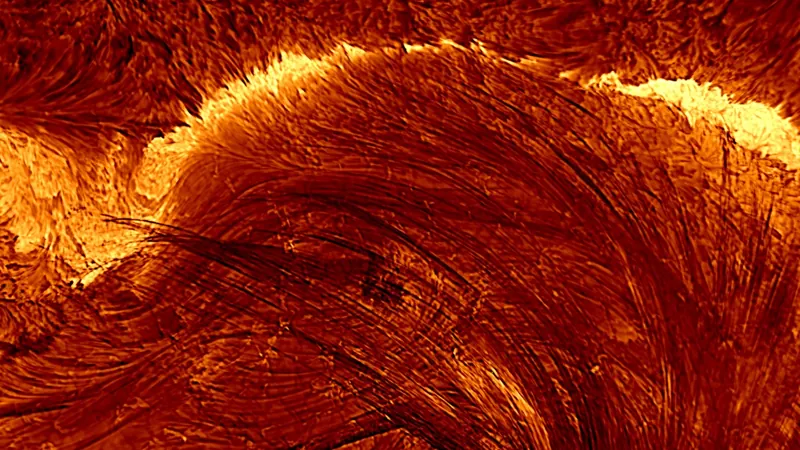
Groundbreaking Revelation: Scientists Capture Most Detailed Photo of a Solar Flare Ever!
2025-08-27
Author: Li
In an extraordinary feat, the world’s largest solar telescope has unveiled the highest-resolution images of a solar flare ever recorded—and the visuals are nothing short of breathtaking!
On August 8, 2024, researchers utilized the Daniel K. Inouye Solar Telescope in Hawaii to focus on the final stages of a powerful X-class solar flare, capturing stunning images of chaotic plasma loops dancing across the sun’s surface. These groundbreaking observations could revolutionize our understanding of solar flares and enhance predictions of future events.
Cole Tamburri, a solar physicist from the University of Colorado Boulder and a coauthor of the study, highlighted the significance of this observation: "This is the first time the Inouye Solar Telescope has ever witnessed an X-class flare. These extreme bursts are among the most energetic phenomena from our star, and we were lucky to capture this one under perfect observing conditions.
What Are Solar Flares? Unraveling the Mysteries!
Solar flares are immense bursts of light created by the sun’s magnetic fields during solar storms. These twisted magnetic fields produce massive loops of plasma, known as arcades, that stretch into the corona, the sun's outermost atmospheric layer. When these magnetic fields twist too much and snap back—a process known as magnetic reconnection—the sun expels a torrent of energy and particles into space. When directed towards Earth, these solar flares can disrupt radio communications and affect satellites orbiting our planet.
Unlocking the Secrets of Plasma Loops!
One major question that has stumped scientists is the size of the plasma loops that form these arcades. Past observations, limited by older telescope technology, have struggled to capture this detail.
However, in a study published on August 25 in The Astrophysical Journal Letters, Tamburri and his team utilized the Inouye’s Visible Broadband Imager to obtain high-resolution images of these plasma loops during the late phases of the solar flare. Remarkably, these loops averaged about 30 miles (48 kilometers) wide, with some as small as 13 miles (21 kilometers)—the finest resolution attainable by the telescope.
Tamburri expressed excitement about the implications of these findings: "We are finally able to explore the scale of these phenomena we’ve speculated about for years. This paves the way for studying not just their size and shape but also their evolution and the scales at which magnetic reconnection—the driving force of flares—occurs."
A New Era in Solar Research!
The implications of this research suggest that the observed coronal loops may serve as foundational components of even larger solar arcades. "If that’s true, we’re not just identifying bundles of loops; for the first time, we’re resolving individual loops," Tamburri noted. "It’s like transitioning from seeing a forest to recognizing and identifying each individual tree within it."
The insights garnered from these coronal loops could significantly refine scientific models of solar flares and enhance our comprehension of the magnetic field in the sun’s corona.
"It's truly a landmark moment in solar science," Tamburri declared. "We are finally observing the sun on a scale that reveals its true workings!"



 Brasil (PT)
Brasil (PT)
 Canada (EN)
Canada (EN)
 Chile (ES)
Chile (ES)
 Česko (CS)
Česko (CS)
 대한민국 (KO)
대한민국 (KO)
 España (ES)
España (ES)
 France (FR)
France (FR)
 Hong Kong (EN)
Hong Kong (EN)
 Italia (IT)
Italia (IT)
 日本 (JA)
日本 (JA)
 Magyarország (HU)
Magyarország (HU)
 Norge (NO)
Norge (NO)
 Polska (PL)
Polska (PL)
 Schweiz (DE)
Schweiz (DE)
 Singapore (EN)
Singapore (EN)
 Sverige (SV)
Sverige (SV)
 Suomi (FI)
Suomi (FI)
 Türkiye (TR)
Türkiye (TR)
 الإمارات العربية المتحدة (AR)
الإمارات العربية المتحدة (AR)